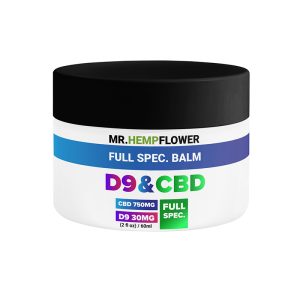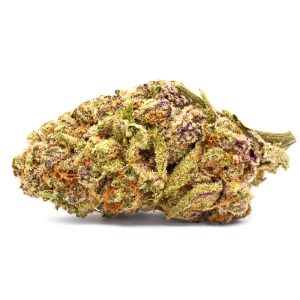Linalool – What Is It? All You Need To Know About Linalool

Linalool
lə-ˈna-lə-ˌwȯl | Noun
A monoterpenoid found in various spices, flowering plants, and even some fungi. Linalool is one of hemp’s primary terpenes known for its anti-inflammatory, antimicrobial, sedative, and stress-relieving properties. It exhibits a sweet lavender fragrance with a touch of citrus, which is why it’s frequently used as a scent and flavoring agent.
“The newest perfume in my collection contains linalool.”
“This hemp pre-roll has a fresh, sweet lavender scent and taste, probably from the linalool in it.”
What is it?
Naturally produced by more than 200 species of plants, linalool is a terpene that is likely found in your garden or kitchen. Aside from fresh mint, hemp, and tomato, it’s also present in rosewood, lavender, laurel, and sweet basil. Each time you’ve used fresh lavender or lavender essential oil, you’ve experienced this organic compound that offers a range of therapeutic effects. Since the 19th century, manufacturers produced this terpene naturally and synthetically due to high demand.
Everyday uses of linalool
It’s an ingredient found in a variety of commercial products, including perfumes and household items. If you check the label of some of the cleaning products you use in your home — look for beta linalool, linalyl alcohol, or linaloyl oxide — they likely contain this terpene.
When it comes to food, the list of herbs and spices that contain this terpene is endless. If you’ve cooked or baked using cinnamon, coriander, mint, or clove, you’ve used this terpene in your food. Aside from spices and herbs, fruits like lemon and mandarine orange — and most food products that incorporate these flavors — also contain this terpene.
Is it safe for skin?
Not only is it regarded as safe for topical application, but it’s present in most personal and skincare products. Up to 80% of detergents, soaps, and shampoos that exhibit a pleasant floral aroma contain linalool. Like most terpenes, including camphene and citronellol, linalool is used as an ingredient in mosquito repellents. An interesting fact about this terpene is that vitamin E is a byproduct of linalool, so it may be present in skincare products containing this vitamin.
Is it toxic for humans?
This terpene is not toxic to humans and animals, which is why it’s one of the most widely used flavoring agents across multiple industries. In fact, one 2011 study published in the Journal of Food Science revealed that people consume more than two grams of this terpene each year.
Therapeutic benefits of linalool terpene
If you’ve ever used lavender essential oil in a massage or aromatherapy, you’ve experienced its calming effects. One of the primary benefits of linalool is that it acts as a natural stress reliever. Researchers are exploring the potential use of this terpene to mediate symptoms of Alzheimer’s disease.
Antimicrobial properties
A 2012 study published in the journal Anaerobe revealed that this terpene has strong antimicrobial activity against bacteria found in the mouth. So, as a solution to bad breath caused by bacteria, researchers suggested using toothpaste and gargling solutions with low concentrations — less than 0.4 milligrams per milliliter — of this terpene.
Anti-inflammatory effect
A 2013 study published in the Journal of Surgical Research used a mouse model to investigate how this terpene could affect acute lung injury. The researchers concluded that it inhibited inflammation, and can be a candidate for the treatment of inflammatory diseases.
Sedative effects
People experience the sedative effects of this terpene through inhalation of essential oils. A 2009 animal study published in the journal Phytomedicine revealed that lavender oil that’s rich in this terpene could induce sedation without affecting motor coordination.
Neurological properties
Scientists are still investigating the potential of this terpene as a therapeutic neurological agent. A 2015 study published in Neuropharmacology revealed that it offers hope for Alzheimer’s disease patients. Researchers conducted the study on a mice model of Alzheimer’s and found that this terpene reversed neuropathological and behavioral impairments in brain cells.
May act as a stress-reliever
One 2013 study published in the journal Evidence-based Complementary and Alternative Medicine found that linalool and linalyl acetate are rapidly absorbed when applied topically. In addition, they cause central nervous system depression — or the feeling that relates to calmness, slow breathing, and slow heart rate. These qualities may potentially help boost the immune system.
Where to find it in hemp?
As one of the major hemp terpenes, it’s found in various hemp strains, including:
- Strawberry Jam CBD Hemp Flower
- Cat’s Meow CBD Hemp Flower
- Harlequin CBD Strain
- Cheese Hemp Pre-roll Blunt
- Suver Haze Hemp Flower Pre-Roll Blunt
Hemp CBD concentrates, like this Grandaddy Purp CBD Wax, contain high levels of this terpene — together with humulene, myrcene, and bisabolol. The presence of this terpene in your hemp strain may contribute to a stress-reducing and sedative effect. As you may know, this terpene plays a significant role in hemp, according to the theory of the entourage effect. This theory suggests that the presence of multiple terpenes and cannabinoids in hemp boosts the plant’s effectiveness. All of that because terpenes modulate the strength of individual cannabinoids.
Final thoughts
A universal ingredient in food and cosmetics, this hemp terpene has shown potential in providing relief from various ailments.
















